
With no equal in the eyes of many, the rose is one of the oldest cultivated flowers.
Its universal appeal has inspired eloquent offerings from poets and writers over the centuries and its horticultural versatility continues to ensure its wide popularity.
And while the rose may have the title of queen of flowers, she has never been a princess.
The regal beauty of the rose fools many into thinking that she is fragile and just a romantic adornment. But looks can be deceptive.
Roses are actually quite tough and if you give them a little care, they will reward you yearly with spectacular flowers.
From informal cottage gardens to more formal bedding or courtyard schemes, roses can be used to complement any landscape style.
They have so many uses in the garden that it’s easy to find places for them, as they can climb, cascade and ramble to disguise and decorate.
There are literally thousands of cultivars with a wide choice of colours, scents and forms available.
TIP Make sure any rose-supporting structures are permanent and as strong as possible, as replacing rotten timber can be a tough job.
Types of roses
Roses don’t have to be grown in beds of their own. In fact, their flower form and shape is highlighted more when grown among a variety of plants.
When combining roses with other species, make sure you space them so they have airflow around the trunk or stems. Also leave enough room around the roots for regular applications of plant food and mulch.
Growing a variety of different plants among your roses gives you the opportunity to provide colour and interest throughout the year.
Plus, it is more environmentally friendly, as having groups of different plants will attract a wide range of beneficial insects to the garden.
Shrub and bush
There are hundreds of shrub and bush roses in varying heights and widths.
Many lower-growing cultivars make pretty hedges, and the smaller ones can be grown in pots.
Plant a selection of perfumed tall and short roses in beds around your entertaining area or a garden bench for a fragrant retreat.
Bush and shrub roses are stand-outs when combined with lower-growing annuals, perennials and shrubs in beds. Match the colours of the rose blooms with other flowers in the bed.
TRY Princess Anne, Black Caviar, Mitsouko, Apricot Delight and City of Ballarat.
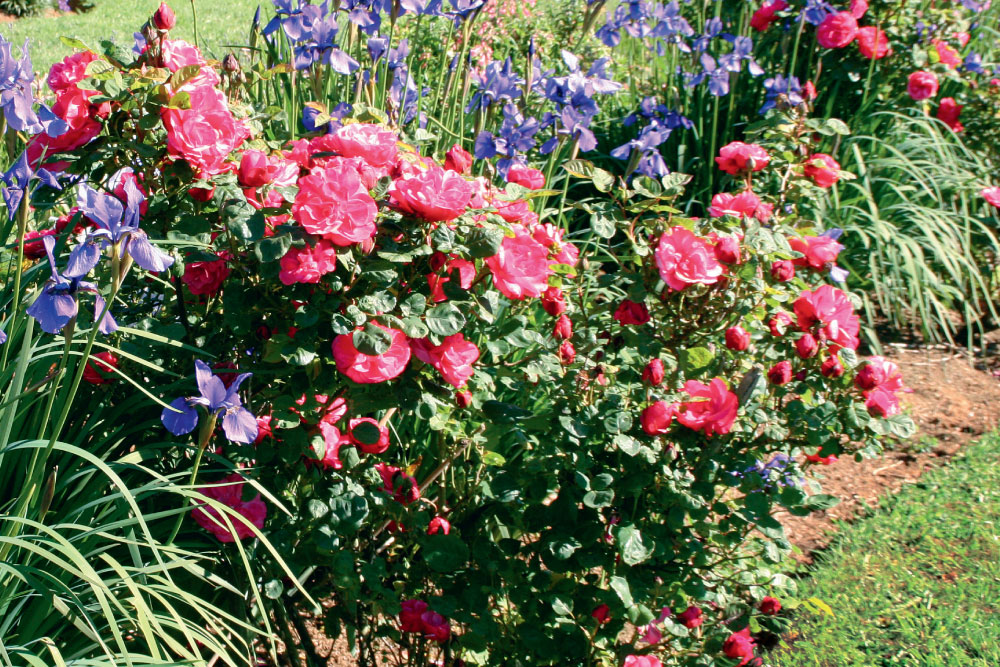
Standards
A variation of the bush rose, standards are grafted onto a straight stem.
Use them to add height to a garden bed or as a centrepiece, or plant them in a row to create a formal appearance. They are also ideal for pots.
TRY Apricot Nectar, Blue Moon, Jane McGrath, Iceberg and Valerie Swane.
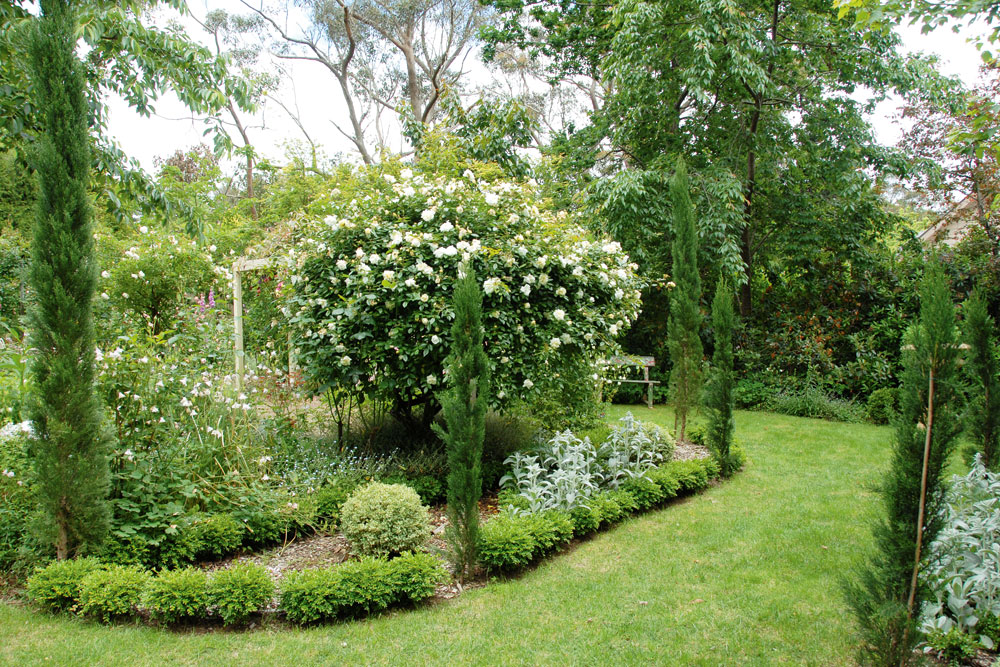
A variation of the bush rose, standards are grafted onto a straight stem. Image: Getty Images
Groundcovers
Perfect cascading out of containers, covering banks or mass-planted as a display, groundcover roses can also be used as low hedges to line pathways or garden beds.
Make sure the soil is weed-free before planting and mulch the area, as weeding under a groundcover can be a rather prickly chore.
Groundcover roses can be simply pruned with hedge clippers.
TRY Purple Rain, Our Rosy Carpet and Flower Carpet roses.
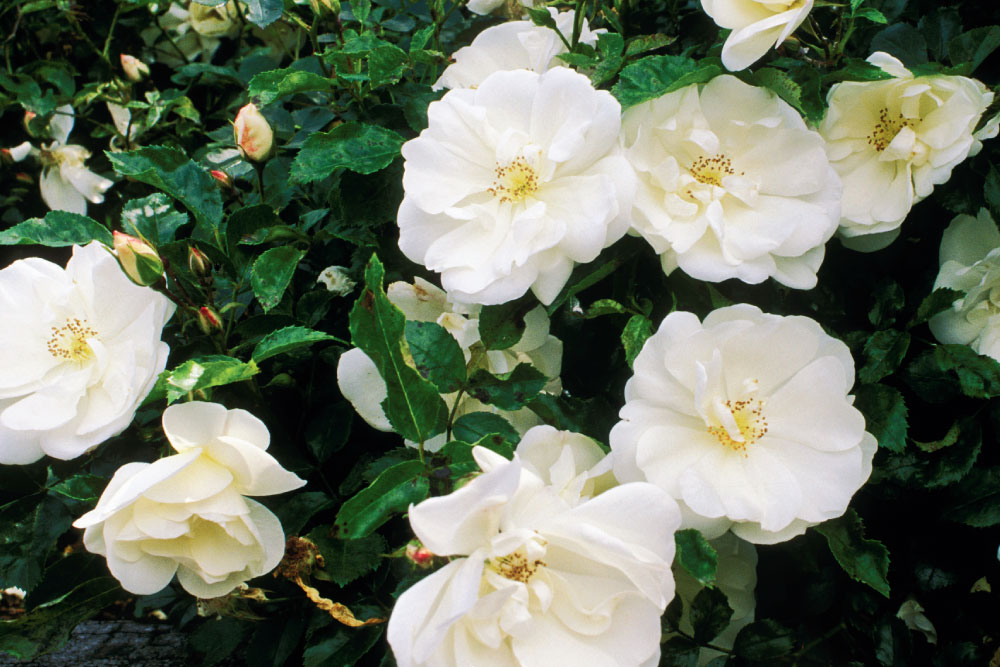
Form a spectacular carpet or cascade of blooms using groundcover roses. Image: Thinkstock
Miniatures
Growing to an average of just 500mm high, miniature roses are mostly used in pots to decorate balconies and courtyards, or as a living centrepiece on on an outdoor table.
TRY Dwarf Fairy, Figurine and and Rise ‘n’ Shine.
In the garden
Roses are tough plants, but give them a little TLC and you’ll be rewarded.
POSITION in an area that receives at least six hours of sun a day and plant in soil enriched with organic matter.
WATER regularly and deeply, especially the first year after planting.
FEED in spring, summer and early autumn with a complete rose fertiliser or cow manure.
MULCH after feeding with lucerne hay or sugar cane.
PRUNE repeat-flowering roses in June and July, or late August and early September in frosty areas.
Remove old wood and spindly growth, then cut the remaining growth back by a third to a half.
Make the cut about 5mm above a bud, angling it to slope slightly back and away from the bud.
Spray pruned roses with Yates Lime Sulfur to clean up any black spot or other fungal diseases.
After the spring and summer flower flush, prune the bush by a third for more blooms.
TIP Species that only bloom in spring are pruned after flowering and not during winter.
Cover with a climber
Walls
A climbing rose in a colour that complements a wall’s surface can change it from dull to amazing.
Roses climb with the aid of their prickles, so supply trellis or wire.
Always plant a climber at least 450mm from the wall to give the roots space. Position the climber to lean towards the wall so it can be easily tied to the support as it grows.
VARIETIES Go for strongly scented climbers for a fragrant display and choose disease-resistant types to minimise maintenance, as climbers can be hard to access.
- Blackboy, crimson
- Social Climber,deep pink
- Climbing Iceberg,pure white
- Nahema, soft pink
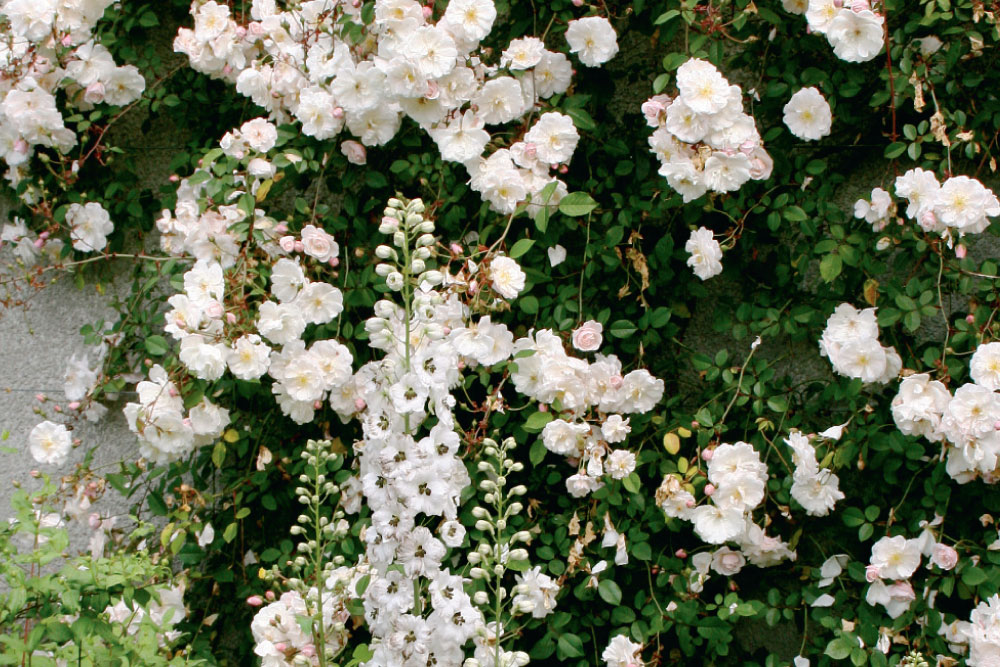
A climbing rose in a colour that complements a wall’s surface can change it from dull to amazing
Archways
Covered in perfumed and climbing roses, archways are a delight to walk under. Simply use soft cloth to tie the rose stems to the archway.
Cover a pergola with perfumed roses and you have a fragrant outdoor room for entertaining and relaxing.
VARIETIES Thornless or virtually thornless are the best choices. And opt for the disease-resistant types, where possible.
- Zephirine Drouhin, cerise
- Smooth Velvet, blood red
- Crepuscule, apricot
- Climbing Pinkie, rose pink
- Climbing Golden Gate, yellow
- Pierre Gagnaire,light pink
- Papi Delbard, apricot, yellow and orange
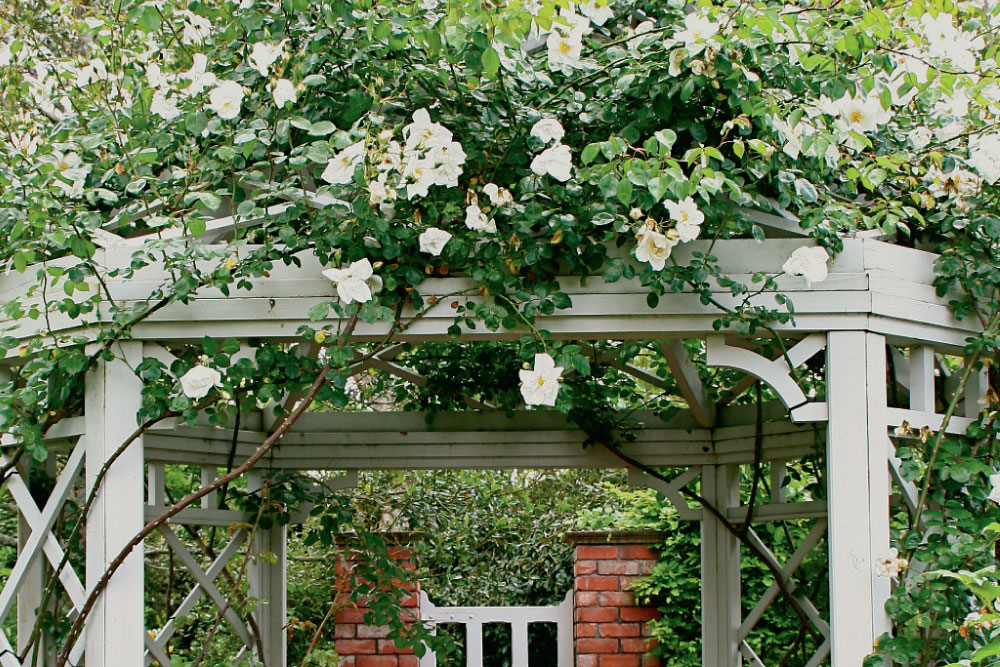
Covered in perfumed and climbing roses, archways are a delight to walk under
Obelisks
For larger shrub roses that climb happily when given a little support, obelisks are perfect.
Use a rose obelisk to add height and interest to an otherwise flat bed or as a feature in a small garden. varieties These fragrant blooms are ideal for obelisks.
- Graham Thomas, yellow
- Abraham Darby, apricot
- Buff Beauty, apricot
- Climbing Blossomtime, pink
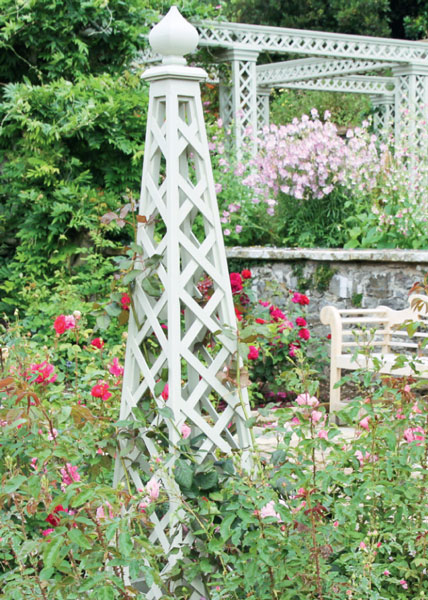
For larger shrub roses that climb happily when given a little support, obelisks are perfect

